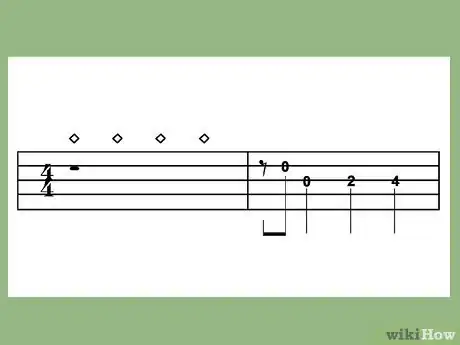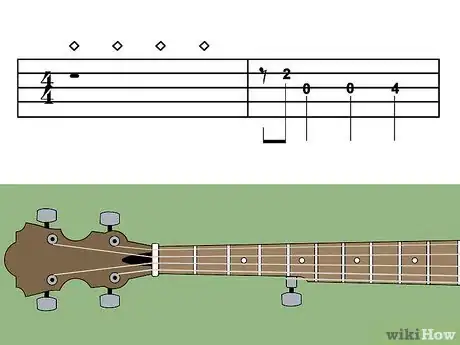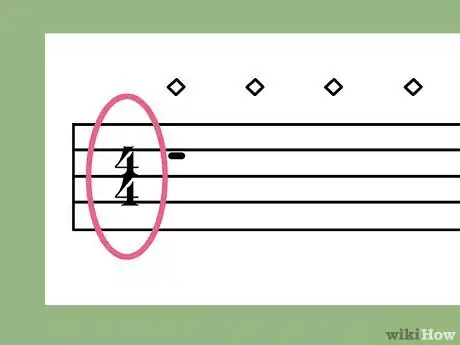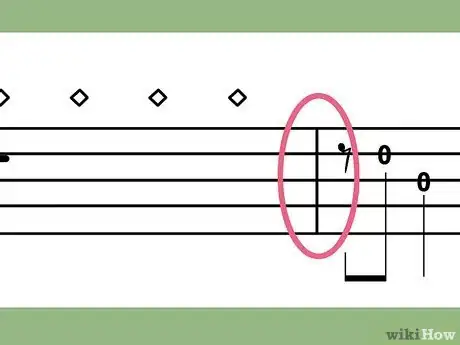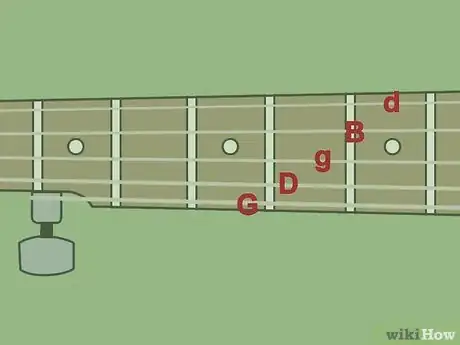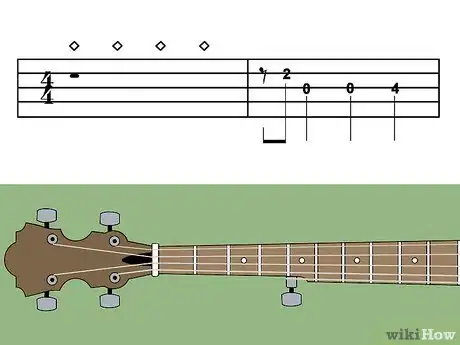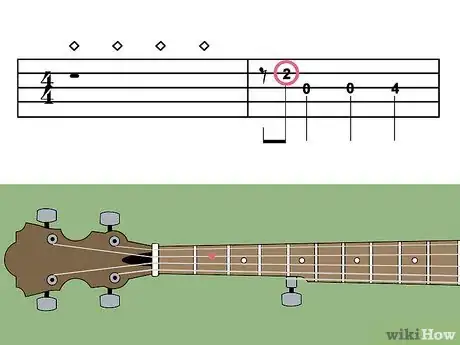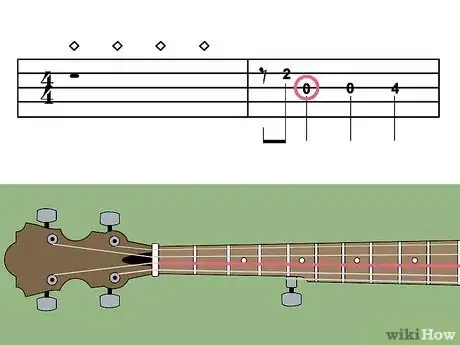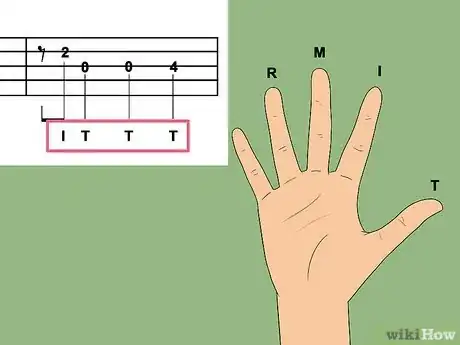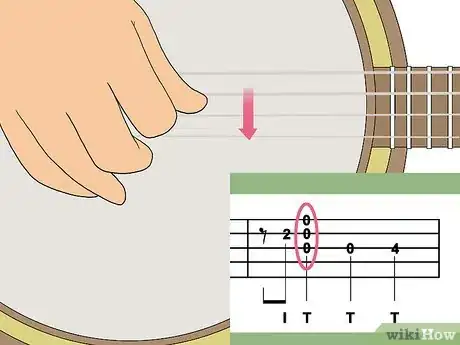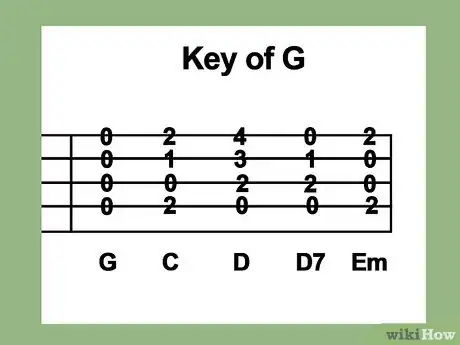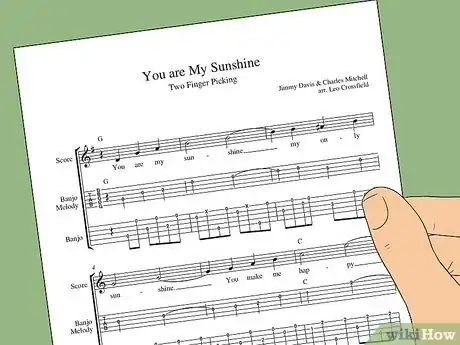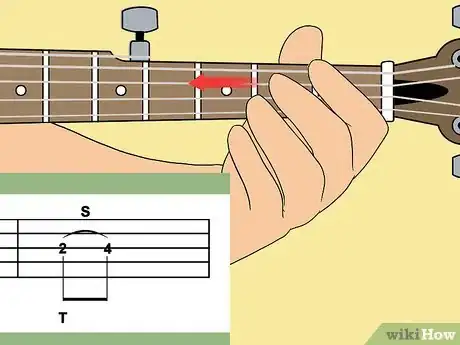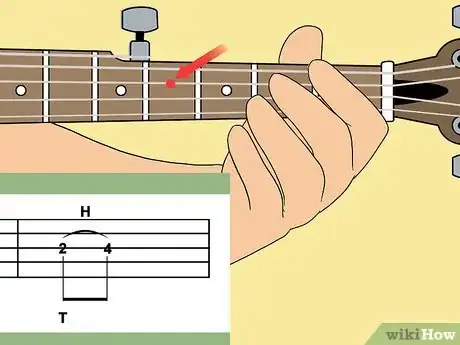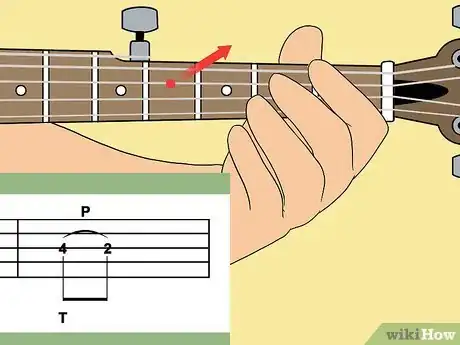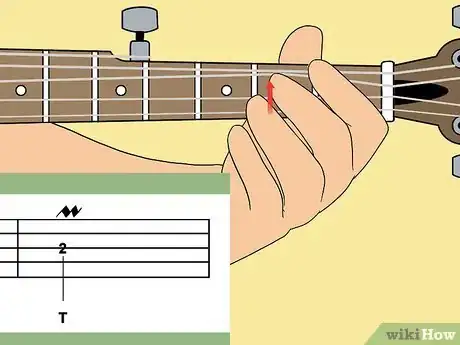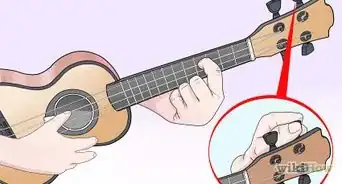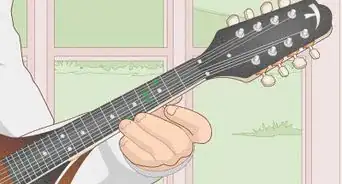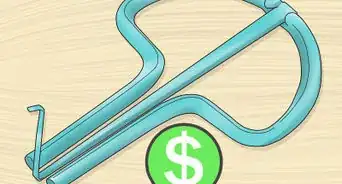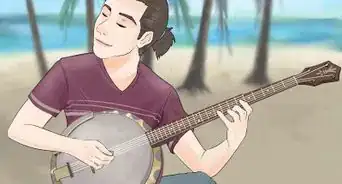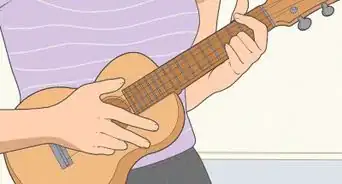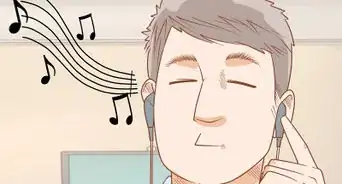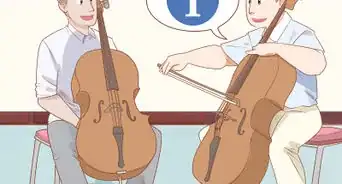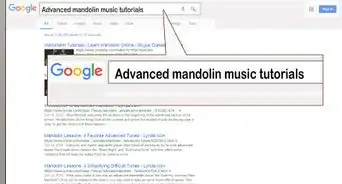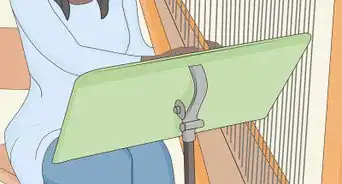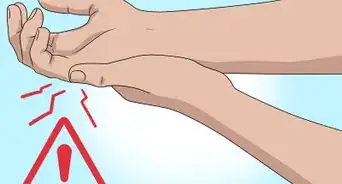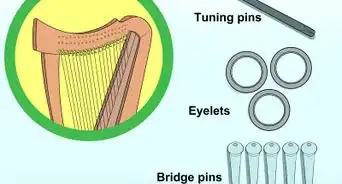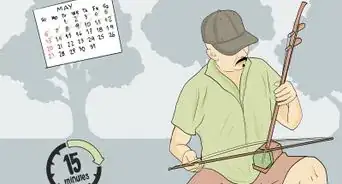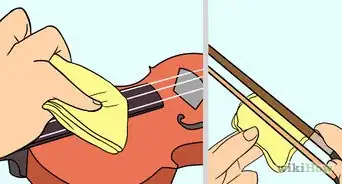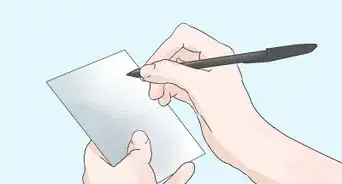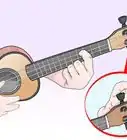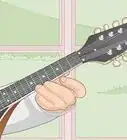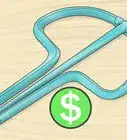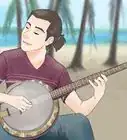This article was co-authored by wikiHow Staff. Our trained team of editors and researchers validate articles for accuracy and comprehensiveness. wikiHow's Content Management Team carefully monitors the work from our editorial staff to ensure that each article is backed by trusted research and meets our high quality standards.
There are 11 references cited in this article, which can be found at the bottom of the page.
This article has been viewed 20,111 times.
Learn more...
Tabs are the quickest and easiest way for both new and old banjo players to dive into a piece of music. Although tabs are not very detailed, they have exactly what you need to play. You don’t have to know anything about reading sheet music or music theory to read tabs. Tabs show the strings of a banjo, where to place your fingers, and when to use special techniques like hammer-ons and pull-offs. By learning how to read tabs, you can understand a type of basic shorthand used for all sorts of songs.
Steps
Reading Tab Notation
-
1Move from left to right while reading a tab. Start the front part of the tab where the time signature is. The time signature is a fraction, so it’s easy to spot. It is sometimes listed behind some other markings, such as a pair of vertical black bars, followed by a pair of dots. You can use these symbols to remind yourself where to start when playing a tab.[1]
- Tabs are always arranged note by note from left to right, making them pretty simple to understand even while you’re busy playing.
-
2Interpret the 5 horizontal lines to be the highest to lowest-pitched strings. Most tabs will have 5 lines, or the same number of strings a standard banjo has. For that reason, you can figure out exactly how to play each note listed on the tab. When you’re holding your banjo as if you’re about to play it, the top line of the tab will represent the thin bottom string. The lower line will stand for the thick string on top.[2]
- The tab isn’t upside down, although it may seem that way at first. To get a better idea of how it works, lay the banjo on your lap. The strings will be positioned just like they are in the tab.
- Note that you may see tabs with 4 lines or 6 lines. Tabs with 4 lines are for banjos with 4 strings. Tabs with 6 lines are for 6-stringed banjos or guitars.
Advertisement -
3Use the time signature to count the number of beats per measure. The time signature is the pair of numbers at the start of the tab. The top number tells you how many beats are in a single measure on the tab. The bottom number indicates what kind of note equals one beat. The time signature helps you keep track of the music’s rhythm while you’re playing.[3]
- For example, in a 4/4 time signature, the top number means that there are 4 beats per measure. Measures are just the individual sections in the tab.
- In a 4/4 time signature, the bottom number tells you that quarter notes are 1 beat. A measure with 4 quarter notes has 4 beats.
- Measures are often marked off by vertical lines, but not all tabs do this.
-
4Spot the vertical lines to mark the beginning and end of each measure. The measure lines are there to help you keep track of the beat. If you’re confused about how the time signature works or how the music is supposed to sound, check for the measure markers. They don’t play any part of the actual song. You don’t play them at all. They are just there to help you keep time.[4]
- For example, the first measure on a 4/4 tab may be 4 quarter notes. The line will be after the last quarter note to end the measure.
- Measure lines are little more than visual markers. If you’re keeping time yourself by tapping your foot to the beat or counting it in your head, you may not even notice that you read past a measure line.
-
5Tune your banjo using the set of letters at the start of the tab. Read the letters on the tab, then turn the tuning pegs at the start of each string. The letters show what note you are playing when you pluck the string without pressing it down over any of the frets. The proper tuning can vary from tab to tab. If you don’t take time to tune your banjo, your playing will sound off-key.[5]
- Get a tuner you can clip to the banjo’s strings. You could also use an online tuner or match the notes to another tuned instrument.
- Standard banjo tuning is G, D, G, B, D from bottom to top. If the tab doesn’t show how to tune the strings, use standard tuning.
Plucking and Strumming Notes
-
1Check the tab line the next note is on. Read the first number to the right of the time signature. It will be on one of the tab’s lines, corresponding to one of the banjo’s strings. Keep in mind that the tab may seem reversed at first. Notes lower on the tab are played with the thicker strings on your banjo.[6]
- To remember how a tab works, think that the top line corresponds to the thickest, lowest-pitched string on your banjo. The bottom line corresponds to the thinnest, highest-pitched string.
- The tab will be a little confusing when you start playing. With practice, you won’t even notice that it seems upside down.
-
2Press down on the strings according to the numbers on the tab. The numbers show you where to place your finger on the banjo’s string. Start at the end of the banjo and move back toward its center. Each fret, or separate square block on the banjo’s neck, is a space. If you see a 3 listed on the tab, for instance, place your finger on the third fret before the string with your opposite hand.[7]
- If you see a 1 on the top tab line, move to the first fret and place your finger on the banjo’s lowest, thinnest string.
- The frets on the banjo’s neck are marked off with metal bars. At first, you may need to look down and count the frets to ensure you place your fingers in the right spot.
-
3Pluck the string when you see a 0 on the tab. It means that you don’t have to press down on the string at all before playing it. Make sure your fretting hand is clear from the string. Then, play the string closest to the body of the guitar. You will end up playing whatever note you tuned the string to.[8]
- Most players use their weaker hand to work the strings. If you’re right-handed, use your left hand, and use your right hand if you’re left-handed. You can then use your dominant hand to strum.
-
4Use the letter markings to determine which fingers to play with. Some tabs have these special markings for beginner players. The letters will be above and below the tab lines. T stands for thumb, I is for index, M is for middle, and R is for ring. They are capitalized to indicate your strumming hand and lowercase to indicate your fretting hand.[9]
- For example, if you see an “i” above a note on the second string, place your index finger on the second string at the correct fret. If you see an “I” below it, strum the string with your index finger.
- Some tabs may use a different set of letters. For these tabs, P is for thumb, I is for index, M is for middle, and A is for ring.
- Your pinky finger isn’t normally used to play notes, although it can sneak in on some complicated pieces. It is usually represented by “c” or “e.”
Playing Chords and Keys
-
1Play a chord when you see several numbers grouped together. Chords are when several notes are played at the same time. On a tab, chord notes are listed together in the same space. They are labeled the same way as individual notes. Position your fingers on the correct fret, then play the strings together.[10]
- For example, a tab might have a 0 listed on the first 3 strings. Strum the lower 3 strings on your banjo.
- Chords are very common, but they aren’t anything more than several notes played together. There are some basic chords that show up a lot, like C and G. Look up a chord chart and practice the finger placement to improve your speed.
-
2Combine different chords that pair well together to play keys. A key is basically just a series of chords that fit well together. Songs are written in different keys, and the key is sometimes listed at the top of a piece of music or tab. To deal with keys, practice different chords and memorize the finger positioning required to play them. Try playing different chords to see which ones sound good together, and read different tabs to see what chords are played together in a song.[11]
- A key is a group of chords that have root notes from the same major scale. A scale is a specific series of notes, and the major scale is one the most common ones.
- An example of a key is G major. If a tab is written in the key of G, expect to see G, C, D, D7, and E minor chords.
- To learn about keys and related chords, look up a chart like the one at https://www.harpkit.com/mm5/banjo-chords.html.
-
3Practice with different scales and songs to memorize chords and keys. Pick a scale, such as G major, then find a tab listing the scale’s notes. Play them in order to get an idea of where the notes are on the banjo. Then, transition to some simple, popular songs written in that scale. The chords in the song will use the same notes from the scale, so you can use that to better understand tabs and become a more proficient banjo player.[12]
- One common song to try is “You Are My Sunshine”. You could also try simple songs with few chords, like “She’ll Be Comin’ Round The Mountain,” “Ring Of Fire,” or “Cripple Creek.”
- If you’re a beginner, start off with simple songs that have 4 or fewer chords. You can play the basic melody by playing the root notes of each chord, like G for a G chord.
Playing Special Characters
-
1Slide your fingers along a string if you see a curved line with an S. The curved line will be above the notes, connecting them on the tab. That means you should play the first note, then move your finger to the second one without lifting it off of the banjo’s neck. Some tabs also have a diagonal line connecting the notes.[13]
- Slides can go in either direction along the fretboard. Sometimes you might have to move from a lower note to a higher one. Other times, you might go in the opposite direction.
- For example, if you see a 2 and a 4, place your finger on the second fret and play the note. Immediately slide your finger down to the fourth fret.
-
2Play a hammer-on if you see a crescent with an H over it. The crescent will connect both notes to show you that they have to be played together. Find the location of both notes on your banjo. Play the first one, but continue holding the string. Quickly press down on the second spot to play the next note.[14]
- A hammer-on is like playing 2 different notes except at a quicker pace. In order for both notes to sound right, you have to be quick.
- One easy way to practice hammer-ons is by playing an open string. Leave your fingers off the fretboard. After plucking one of the strings, quickly push down on a fret.
-
3Perform a pull-off if you see a crescent with a P over it. Pull-offs happen when you play a lower note on the banjo and transition to a higher one. You will see a pair of notes connected by the marking on the tab. Find the location of both notes on the banjo’s fretboard, then play the first one listed. While holding down the string, play the second one with another finger. Quickly pull off your first finger to sound the second note.[15]
- Pull-offs are the opposite of hammer-ons. Instead of moving toward the banjo’s body, you move toward its opposite end. The second note of a pull-off is higher than the first one.
- To practice pull-offs, choose 2 frets side by side, such as the second and third one. Play the lower one, then immediately switch to the higher one until the transition sounds seamless.
-
4Play a choke when you see a squiggle over a tab number. A choke is when you push the strings up after playing them. It makes them sound a little higher-pitched than usual. Play the note as you normally would, then push it up toward the string above it. Try doing it with 2 fingers for additional strength.[16]
- This is also called bending. Some tabs may display a line that curves up toward the top of the tab. It means that you have to “bend” the string, or push it up along the fretboard.
- Chokes are common in bluegrass. They are often done with the second string from the top on the 10th fret.
References
- ↑ https://clawhammerbanjo.net/how-to-read-banjo-tabs/
- ↑ https://banjochords.net/lessons/reading-banjo-tablature/
- ↑ https://www.ezfolk.com/banjo/Tutorials/Reading_Tablature/reading_tablature.html
- ↑ http://www.banjoben.com/tablature.htm
- ↑ https://www.ezfolk.com/banjo/Tutorials/Reading_Tablature/reading_tablature.html
- ↑ https://www.youtube.com/watch?v=7V4-Tymyq0w&feature=youtu.be&t=210
- ↑ http://www.banjoben.com/tablature.htm
- ↑ https://banjochords.net/lessons/reading-banjo-tablature/
- ↑ https://www.youtube.com/watch?v=i6yCV0MWhv8&feature=youtu.be&t=121
- ↑ https://www.youtube.com/watch?v=-Y6t8E_Pemo&feature=youtu.be&t=526
- ↑ https://www.harpkit.com/mm5/banjo-chords.html
- ↑ https://banjotabs.org/category/easy/
- ↑ https://www.youtube.com/watch?v=i6yCV0MWhv8&feature=youtu.be&t=246
- ↑ https://clawhammerbanjo.net/how-to-read-banjo-tabs/
- ↑ https://clawhammerbanjo.net/how-to-read-banjo-tabs/
- ↑ https://www.youtube.com/watch?v=i6yCV0MWhv8&feature=youtu.be&t=384
